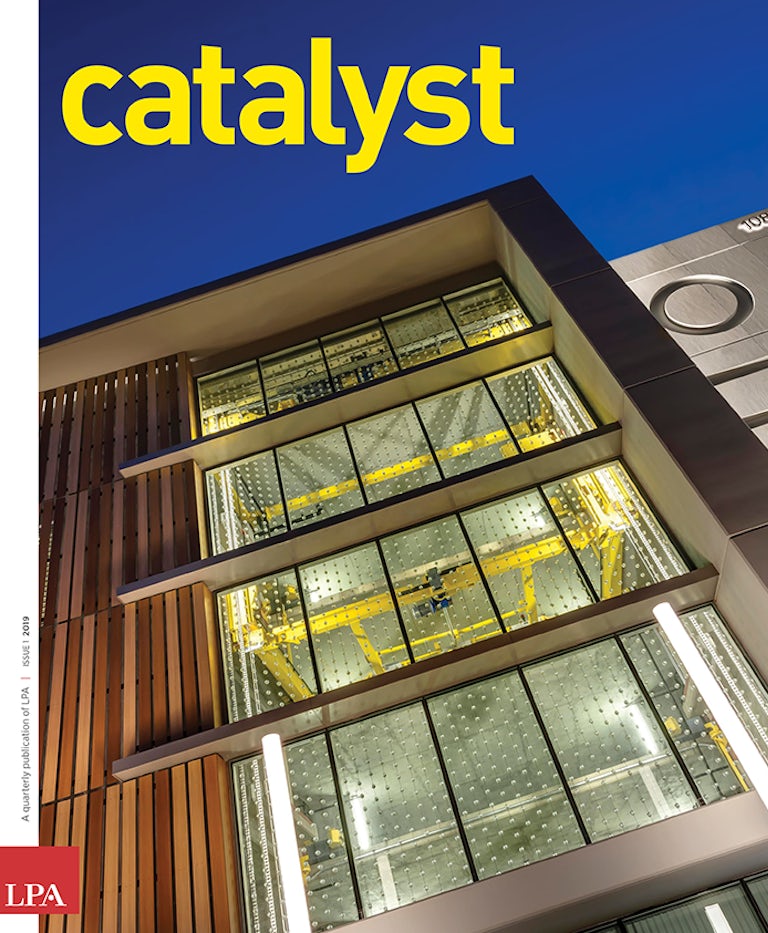The ground-up design for the Menchaca Elementary School for Austin ISD illustrates how a commitment to community engagement, research and innovative learning environments can change the course of a campus.
Located in a growing area of south Austin, Menchaca was one of the first design-build projects initiated by the district, replacing an existing school. And the district was tied to a tight schedule, with broad guidelines already in place for the design.
The 98,600-square-foot campus was originally conceived as a single building with interior circulation. But new possibilities quickly began to emerge, as discussions and exploratory meetings began with administrators, teachers and the community. Despite the short timeframe, an organized process was developed to examine the site and priorities of all the stakeholders.
“A lot of people have a fear-based mindset that outreach or diving deep into a process like this can’t be done on a short timeframe,” says LPA Associate Principal Kate Mraw, who helped guide the process.
Designing a New School for Austin, Texas
Community involvement and a deep-dive process help reshape the future of an elementary school.



Early discussions focused on broad concepts, including the massing and gifts of the site, which included several mature Texas oak trees. Teachers and faculty were encouraged to explore the site through the eyes of students. “In a massing exercise, the stakeholders talked about hands on learning, being outside, feeding their chickens and really connecting with nature,” says LPA project leader Jim Oppelt. “So, they started to pull apart the buildings.”
The designers worked closely with a Campus Architectural Team, comprised of a cross section of stakeholders, including teachers, parents and members of the community. The process included program verification, focus group interviews, 3D modeling and site tours. Each step was planned, exploring different elements on a fundamental level, looking at how the spaces would actually be used.
“There is this constant engagement where they can see the iteration of the project developing and it’s no longer LPA’s design,” Mraw says. “It’s Menchaca’s design that we are putting together.”
The entire process went from programming to permitting in six months. The end result is a collection of three buildings with shaded outdoor collaboration spaces designed around the heritage oak trees. The buildings form two courtyards linked by a second-story bridge that houses an innovative library media center and makerspaces specifically designed for the school. More than 30 percent of the site is open, vegetated space, creating direct links between the outdoors and learning environments.
“The process of exchanging ideas, listening and collaborating has exceeded my expectations,” says Menchaca Principal Eliza Loyola, Elementary School. “From the beginning LPA has been a unique collaborator and have taken the time to learn, know and design for our community.”
Sustainability and energy efficiency were baked into every aspect of the design. Indoor water usage was cut by 30 percent and the overall energy use was reduced by 20 percent, primarily through passive measures such as building orientation, shading and strategic use of natural light. The campus is designed to meet LEED Silver certification, including a commitment to air quality and overall wellness for the students and faculty.
“The final design reflects the community, as well as the interests of administrators, teachers and students,” Mraw says. “It is a great example that a better process can create a better result.”
This story originally appeared in Catalyst Issue 1 2019. Subscribe today to receive Catalyst, a quarterly publication that takes a deep dive into design ideas, industry leaders and initiatives.















